11 Types of Band Saws (With Pictures)
-
Pete Ortiz
- Last updated:
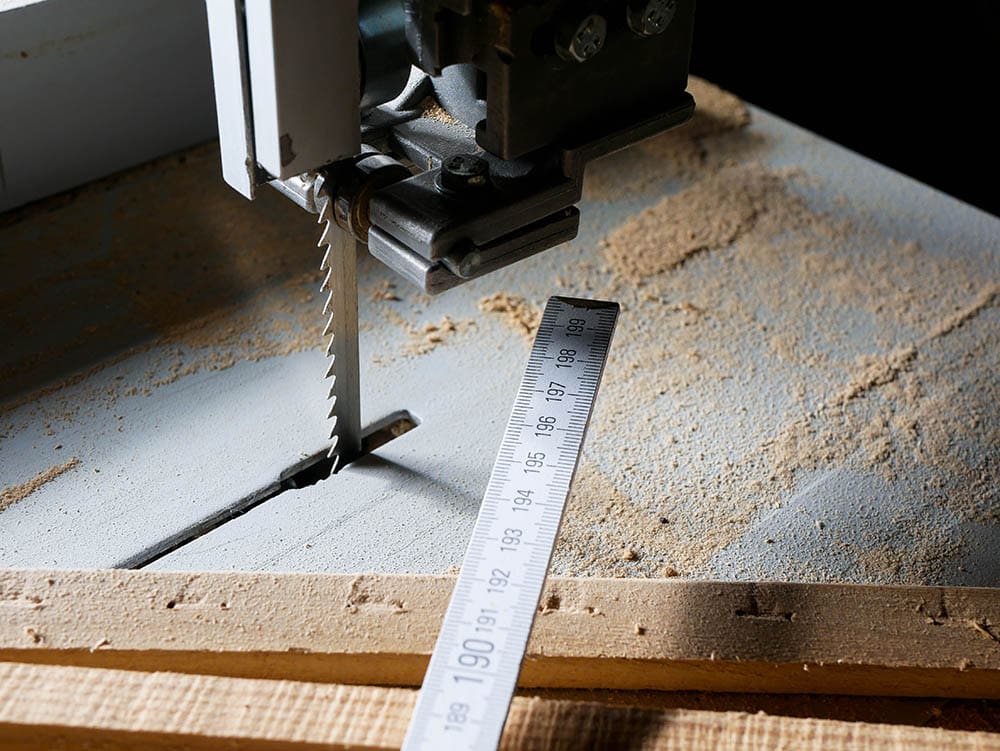
If you do lots of woodworking or like to cut metal or plastic, a band saw will be a great investment. Thanks to the long, sharp, and toothed blades, it is well-suited for cutting a wide range of materials. But wait—what’s the right type of band saw for you? Should you go with a metal or a meat saw? Are double-cut saws better than head saws?
What’s the difference between vertical and horizontal designs? We have all the answers right here! The following list includes 11 band saw types, divided into two categories: by purpose and by shape. Every single machine is designed for a different task. So, before you commit to any of these options, check out our detailed reviews!
The 11 Types of Band Saws
By Purpose/Cutting Material
What are you planning on cutting? Is it wood or metal? Or maybe you want to make some precise meat slicing? Before you pick a band saw, take a moment to think about exactly what you’re looking to cut. Here’s a list of various band saws according to their purpose.
1. Metal Saw
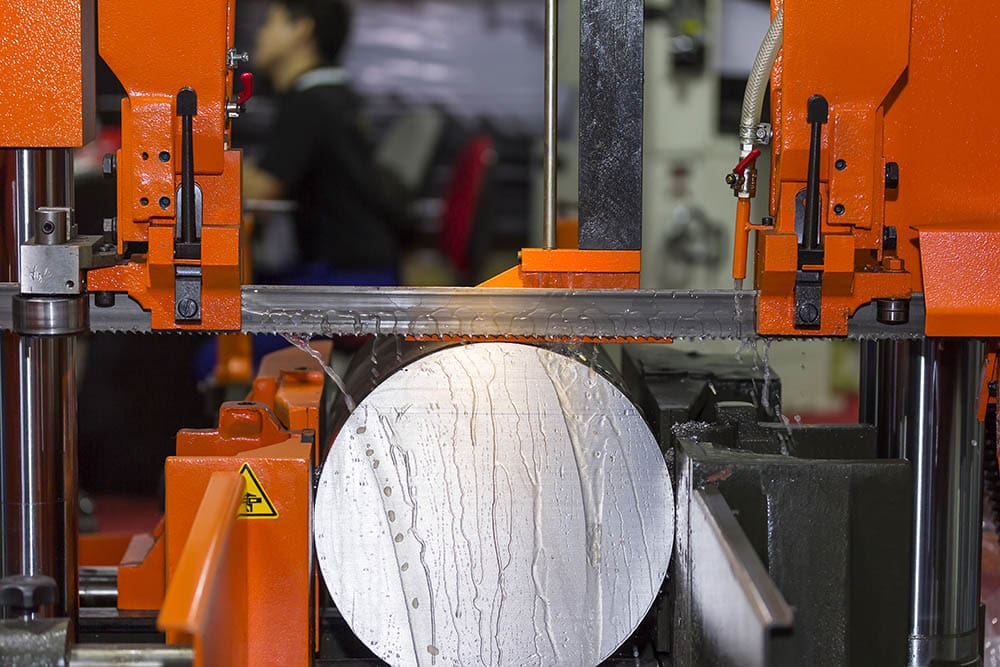
| Can be used for: | Cutting metal, stone, and wood |
| Maintenance: | Very low |
| Ease of use: | Moderate |
| Extra features: | Cooling, brush wheels |
In many ways, a metal saw is similar to a wood saw. However, it’s more versatile and can cut not only through metal but also wood and stone. It’s the blades that make all the difference. On the downside, metal band saws operate at a much slower speed. Plus, you’ll need to invest in high-TPI (teeth per inch) blades, and they’re not that cheap.
These machines can be both horizontal and vertical, by the way. The horizontal machines are in greater demand, especially among contractors, but the vertical saws do a better job of handling intricate cutting tasks. In any case, metal saws require very little maintenance and are relatively easy to operate. Besides, you can always refer to the inbuilt instructions.
2. Meat Saw

| Can be used for: | Slicing and cutting meat, cutting through the fat |
| Maintenance: | Very |
| Ease of use: | Very high |
| Extra features: | Mincer and spout |
As you’ve probably guessed, this saw is specifically designed for one purpose: to cut meat. Popular among butchers, it is equally fast, effective, and easy to use. Plus, it doesn’t cost a fortune. Now, because of the stainless-steel surface, meat saws take very little time and effort to clean, which is another big pro. These saws are low-maintenance and produce minimal waste, thanks to the unique, clean-cut blades.
Slicing steak and lamb, cutting fat and even bones—that’s what these machines can do for you. And if you’re a big fan of making sausages, you can always opt for a spout and mincer (that will cost extra, of course). This is important: NEVER use a meat saw for cutting wood or metal unless you want to ruin the blades!
3. Wood Saw
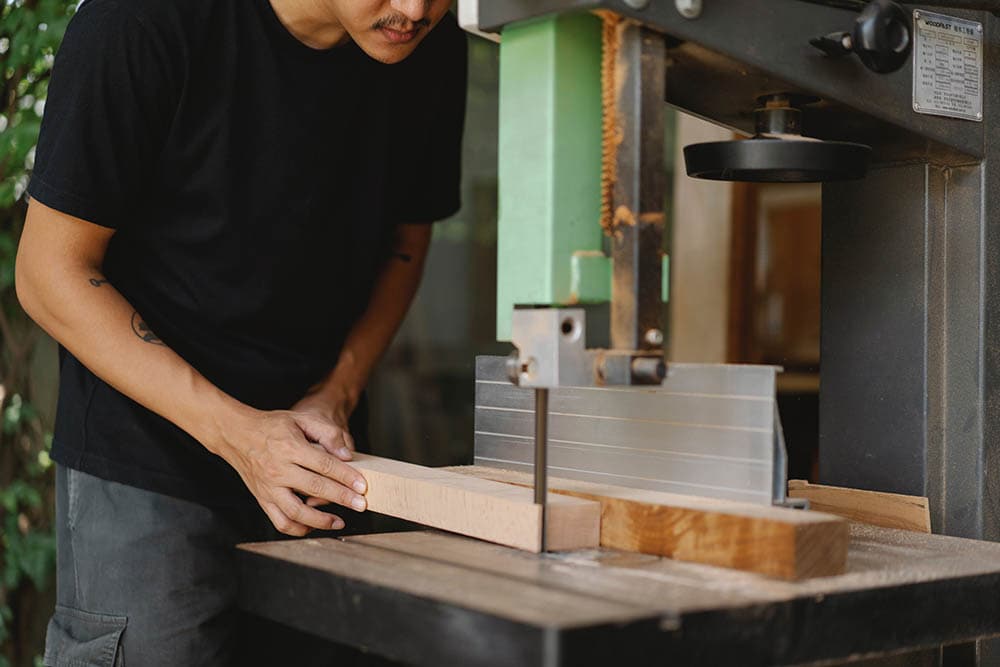
| Can be used for: | Woodworking, lumbering |
| Maintenance: | Very low |
| Ease of use: | Moderate |
| Extra features: | Available in different sizes |
Did you know that the very first band saws were built for cutting wood? That’s right, and there are lots of different versions out there. For a “garage workshop”, we recommend getting a smaller wood saw. And if you run a business, a bigger machine will be more appropriate. Wood band saws are often used in timber mills.
The reason: the thin-kerf blades leave almost no sawdust behind. Yes, just like meat saws, wood saws are very easy to maintain. Now, there are three types of wood band saws out there, including double-cut, resaw, and head saws. Not sure which one to invest in? Let’s see what each model has to offer!
4. Double-Cut Saw
| Can be used for: | Cutting plastic, metal, and wood |
| Maintenance: | Highlow |
| Ease of use: | Moderate |
| Extra features: | Multipurpose design |
These can be big and bulky (for industrial work), portable, or tabletop friendly. And they’re ready to cut not only wood but also plastic and even metal. The biggest standout feature of double-cut saws—the blades have teeth on both sides. The double-sided blade design allows the machine to cut through pretty much anything without getting stuck or ruining the material.
Double-cut band saws are mostly used in the commercial sector. They tend to be quite expensive and not very easy to maintain. So, only consider buying such a saw if you’re the owner of a facility that specializes in cutting thick lumber, metal sheets, or plastic tubes.
5. Resaw Band Saw
| Can be used for: | Cutting large stock into thinner stock |
| Maintenance: | Very low |
| Ease of use: | Very high |
| Extra features: | Minimal wastage |
Resaw machines are quite heavy. They are mostly used for cutting large timber into thin stock, slicing against the grain. Now, in contrast to how big resaw band saws are, their blades are very thin. Why is that, though? First, a thin blade equals precision. Second, thanks to how accurate it is, the blade leaves minimal wastage for you to clean.
6. Head Saw
| Can be used for: | Trimming hardwood |
| Maintenance: | Average |
| Ease of use: | Low/moderate |
| Extra features: | Teeth made of silver |
Do you work with cherry, oak, maple, and other premium-quality hardwood? Then a head saw will be an excellent purchase. Yes, head band saws are specifically crafted to excel at cutting hardwood. The blades on such a machine have wide-spread teeth. The distance is, indeed, quite long (2–3 inches), and that allows the blades to cut rather deep and never get stuck in the timber or damage it.
Oh, and one more thing: the teeth are made of silver, which makes head saws even more effective at handling different types of hardwood.
 By Shape/Direction
By Shape/Direction
Band saws come in different sizes and shapes. Some are vertical, while others only operate when positioned horizontally. And then you have portable, floor-standing, and benchtop band saws. So, which machine should you go with? Take a close look to make a choice!7.
7. Floor-Standing Saw
| Can be used for: | Commercial-grade cutting |
| Maintenance: | High |
| Ease of use: | Low/moderate |
| Extra features: | Powerful; large workspace |
Most commercial-grade band saws are floor-standing as these machines are incredibly powerful and can manage high volumes of lumber, metal, or whatever you’re cutting. Contractors speak highly of these saws because they cut with precision and operate like clockwork. Floor-standing saws do take lots of space, meaning they probably won’t fit in your garage.
Again, for commercial use, this is great news, as it means above-average table size and extended cutting capabilities. But these saws are not at all affordable. For a DIY workshop owner or a person that just wants to cut some wood now and then, floor-standing band saws will be a waste of money.
8. Benchtop Saw
| Can be used for: | Quick, precise DIY cutting |
| Maintenance: | Very low |
| Ease of use: | High |
| Extra features: | Low footprint, versatile design |
These saws have a lot in common with the floor-standing machines, but they’re lighter, smaller, and, more importantly, mobile. The saw is quite easy to carry around and it can be mounted onto any flat surface that will serve as a table. This flexible design makes benchtop saws a very popular choice among DIY woodworkers looking for a portable, affordable option. The low footprint is a big advantage as well.
In some ways, benchtop saws are the “love child” of floor-standing saws and jigsaws. And if you have very limited space, there are some very small models available that still pack a punch.
9. Portable/Handheld Saw
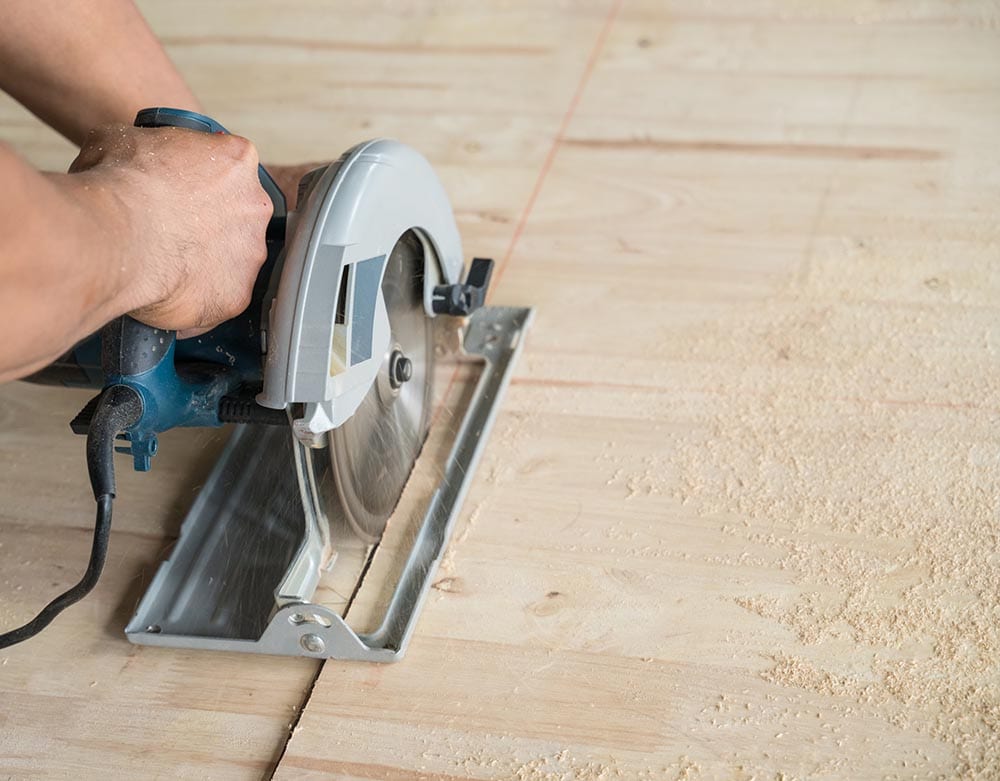
| Can be used for: | Curved, edged, intricate cuts |
| Maintenance: | Average |
| Ease of use: | Very high |
| Extra features: | Mobile, lightweight |
Speaking of mobility and lightweight designs, let’s talk about handheld saws. As the name suggests, these tools can be operated manually. So, instead of bringing the wood, metal, or plastic to the workshop where you have the saw installed, you can instead take the equipment with you wherever you go. Flexibility will also be a part of the deal.
Curved, intricate, irregular, and edge cuts are all available with portable saws. Even if you mostly work with large timber, a high-quality portable saw will be able to cut it, along with relatively thin metal and plastic.
10. Horizontal Saw
| Can be used for: | Accurate cuts, slicing large timber, steel |
| Maintenance: | Average/high |
| Ease of use: | Very high |
| Extra features: | Quiet performance; quick speed changes |
If you’re just making your first steps into the world of bandsaws, consider going with a horizontal machine. It’s very easy to use and is known for delivering accurate cuts even on the thickest lumber. Cutting curves aren’t its strong suit, though—keep that in mind. What the pros like about this saw is that it doesn’t make any loud noises when working at its limit.
Besides, it takes very little time to change between speeds, which can’t be said about most saws. The built-in electric motor is what makes this possible. Most horizontal band saws you’ll see at commercial facilities will be floor mounted. They are widely used for cutting tubing and steel for industrial needs.
11. Vertical Saw
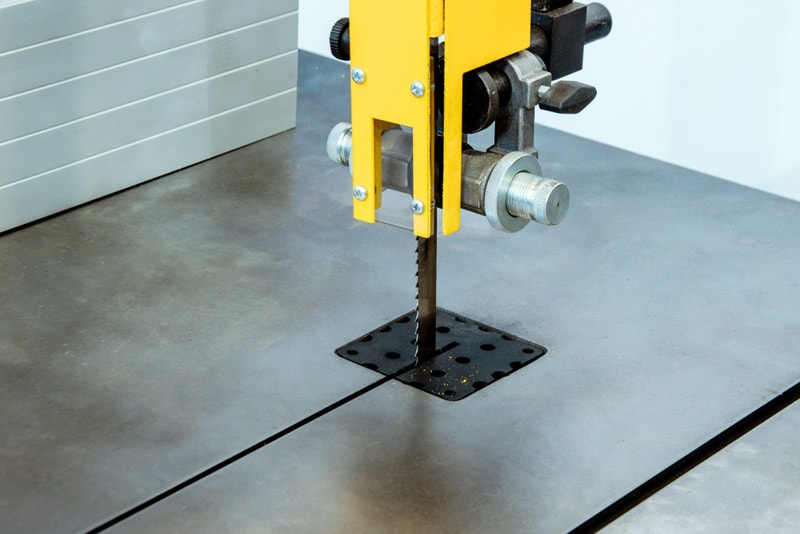
| Can be used for: | High-precision, sophisticated cuts, polishing |
| Maintenance: | Average |
| Ease of use: | Low/moderate |
| Extra features: | Flexible; handles various tasks |
Last, but not least, we’ve got the vertical saws. In contrast to the horizontal models, vertical band saws are perfect for polishing and making intricate, sophisticated cuts on a wide range of materials. Here’s how this mechanism works: it features two wheels, the driver, and the idler. When the wheels rotate, so does the blade.
This makes clean, perfect cuts possible. Instead of moving the blade against the material, you push the material against it, much like a tailor does with the fabric and the needle. That’s exactly why contractors are calling vertical saws the most flexible and advanced option on the market.
 Maintenance: Taking Proper Care of Your Band Saw
Maintenance: Taking Proper Care of Your Band Saw
Band saws aren’t exactly cheap. So, if you want your machine to serve for years, or even decades, make regular maintenance a part of your routine. And we’re not only talking about changing the blades once in 1–2 years or keeping the workplace clean. Here’s how you can increase the lifespan of a band saw:
- Get rid of sawdust. You’ll be amazed by how much dust, dirt, and debris find their way into the machine. The best tools for removing it are air compressors and blowers. But before you use them, don’t forget to turn the band saw off and then unplug it to eliminate the chance of an electric charge ruining the machine or hurting you. Now just point the blower/compressor at the saw and turn it on.
- What about the blades? They take a bit more time to clean, but if you have a rust remover solution and a wire brush or steel wool, this will only take 5–10 minutes. Put on a set of protective gloves, remove the blade from the machine, and only then clean it. Or, if you’re doing lots of woodworking, and the blades are “gummed up”, use an industrial wood and resin remover slash tool cleaner instead.
- The wheels and the pitch. When the blade is properly cleaned, don’t forget to clean the pulleys and the pitch as well. Again, a resin remover will do an excellent job here. If the gunk is too stubborn, you might have to use the wire brush once or twice.
- Keep the table clean. The carbon dust, rust, and dirt on the table should be handled with the same brush/steel wool and rust remover combo. Dip the wool into the formula and scrub to get rid of the residue. Next, grab a clean towel, cloth, or sponge and finish the job.
Band Saw vs Scroll Saw: What’s the Difference?
Both the scroll and the band saw are praised for their ability to make precise, accurate, curved cuts. That’s why they’re being compared so often. However, there are more than enough differences between these tools, including the way the blades cut. With a band saw, you get a set of wheels (the driver and the idler) rolling the blade in a loop. This way, the blade is always cutting downwards, which increases its power.
As for scroll blades, they move up and down instead. That allows the scroll saw to be slightly more accurate, especially around curves. You’ll get a smoother surface, too. Band saws are a lot more flexible and versatile, though, and easily cut through harder and heavier materials. They can cut curves, pipes, plastic, metal, and, of course, lumber, handling resawing, ripping, and milling tasks.
Conclusion
Versatile, accurate, and with an extended lifespan, band saws are perfect for resawing and cutting irregular shapes and curves. Timber, metal, tubes—they handle it all. Mostly automated, band saws take a day or two to master. Today, we reviewed 11 different kinds of band saws, including wood, metal, meat, floor-standing, and portable units.
While they’re not particularly cheap, band saws are worth every penny, especially if you’re running a commercial business. This is only true if the saw is a perfect fit, of course, but we’re more than confident that you’ll be able to find the right tool for your workshop on the list. So, take your time, go over the saws again, and pay extra attention to the metrics!
Featured Image Credit: Benedek Alpar, Shutterstock
Contents


 By Shape/Direction
By Shape/Direction
